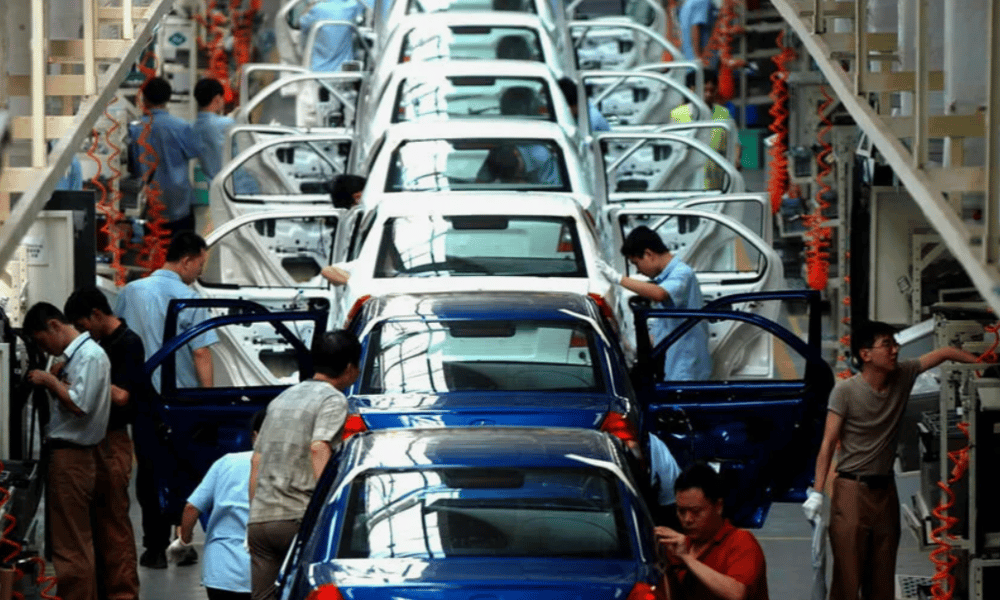China Halts Car Trade-In Subsidies in Key Cities, Raising Concerns Over Auto Sector Recovery
Several Chinese cities, including Zhengzhou, Luoyang, Shenyang, and Chongqing, have suspended government-backed car trade-in subsidies in June 2025, citing either funding exhaustion or budgetary reassessments. The decision comes as Beijing’s stimulus efforts in the automotive sector—central to reviving domestic consumption and manufacturing activity—face structural and fiscal limitations.
As China remains the world’s second-largest economy and its largest auto market, the halt of subsidy programs in regional hubs could affect vehicle sales momentum, particularly in lower-tier cities where incentives have been critical in stimulating replacement demand.
Implications of Localized Subsidy Cuts for the Automotive Sector
The suspended trade-in programs were part of China’s broader push to revitalize consumer spending through scrappage incentives, encouraging citizens to replace old, polluting vehicles with new, energy-efficient models. With over 30 billion yuan ($4.1 billion) allocated in earlier rounds, the initiative had bolstered auto sales volumes and supported both domestic and joint venture brands.
However, June’s suspension notices suggest that local governments are now constrained by fiscal limits, or are being instructed to reassess disbursement strategies for efficiency. This may indicate a growing shift in China’s stimulus narrative—from broad-based consumption support toward more targeted industrial investment, such as EV infrastructure or critical component supply chains.
The consequence is a short-term disruption in new car sales, particularly in provincial cities that depend heavily on subsidy-driven demand. With consumer sentiment still fragile due to housing market pressures and weak wage growth, the absence of financial incentives could undermine Q3 retail and manufacturing metrics.

Quick Facts:
🚫 Cities affected: Zhengzhou, Luoyang, Shenyang, Chongqing, among others
💸 Reason for pause: Fund exhaustion or capital efficiency realignment
🚗 Sector impacted: New car sales, particularly budget and mid-range segments
🇨🇳 Program origin: National trade-in subsidies initiated by Beijing to spur consumption
📉 Risks: Slowing recovery in automotive production and retail, especially outside Tier-1 cities
Extended Analysis: Market Reactions and Sector Commentary
The auto industry, particularly local brands and joint ventures like SAIC-GM-Wuling and Geely $0175.HK, may face pressure in their second-half 2025 sales targets. Investors are monitoring whether Beijing will authorize a second wave of funding or allow further decentralization of subsidy policy.
Equity analysts note that A-shares of listed auto manufacturers saw mild declines following the suspension news, as the market recalibrated expectations for Q3 retail data. EV players such as BYD $002594.SZ and NIO Inc. $9866.HK may be better insulated due to ongoing national support for clean energy vehicles, but traditional internal combustion engine (ICE) makers could lose momentum.
Macro strategists suggest that unless consumer incentives are quickly reinstated or replaced with targeted tax credits, China’s industrial production data may face additional downside risk, with ripple effects across commodity markets, logistics, and retail auto financing.

Key Points:
Subsidy Program Exhausted — First round of funding used up faster than anticipated.
Regional vs Central Tensions — Cities cite lack of new funding; Beijing has not yet confirmed further disbursements.
Auto Sales at Risk — Analysts forecast a potential 5–8% decline in Q3 new vehicle registrations.
Budget Prioritization Shift — Indications point toward reallocating funds from retail incentives to industrial policy.
Equity Impact — Auto stocks showed mild corrections, especially ICE-heavy firms.
EV Segment Stability — BYD, NIO, and XPeng $XPEV less affected due to separate national subsidy channels.
Consumer Sentiment Watch — Weaker household confidence may require non-monetary policy support.
Funding Gaps Highlight Fragility in China’s Consumer-Led Recovery
The suspension of car trade-in subsidies across multiple cities in China highlights the fragility of regional fiscal capacity and underscores challenges in sustaining domestic consumption-driven recovery. While designed as a temporary pause, the lack of clarity on replacement incentives or renewed funding risks undermining vehicle sales and related manufacturing output in the second half of 2025.
In a broader context, the move signals Beijing’s evolving focus from broad household stimulus toward more strategic, supply-side support, potentially leaving consumer demand cyclically exposed. If not promptly addressed, the disruption in auto subsidies could become a drag on broader economic momentum, especially as external demand for Chinese exports continues to face geopolitical headwinds.















Comments
Forward-looking capital deployment is accelerating technological disruption across industries